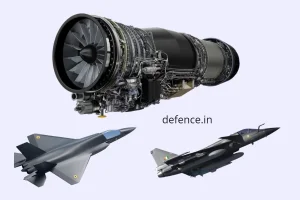- Views: 919
- Replies: 8
Defence analysts are urging the Indian Air Force (IAF) to forge its own path in defining what constitutes a sixth-generation fighter jet. By establishing its own standards, the IAF can tailor its Air Staff Requirements (ASR) to meet specific operational needs, rather than adopting definitions set by global powers like the USA and China.
This perspective comes at a time when the global aerospace community is actively debating the characteristics of a sixth-generation fighter. Traditionally, fighter jet evolution has been heavily influenced by Western and, increasingly, Chinese definitions, which emphasize aspects like enhanced stealth, artificial intelligence (AI), unmanned teaming capabilities, and hypersonic weaponry.
Analysts argue that India's strategic environment, with its unique geographical and geopolitical challenges, necessitates a fighter jet that may not perfectly align with the capabilities prioritized by other nations. The IAF's operational environment demands aircraft optimized for high-altitude combat, long-range capabilities, and resilience against diverse weather conditions prevalent across India's varied terrain.
By defining its own parameters, India could lead in specific technological areas, fostering innovation within its defence sector. This could include unique integration of indigenous technologies like directed energy weapons or advanced sensor suites specialized for the subcontinental theatre.
Furthermore, crafting its own sixth-generation fighter definition allows India to avoid the race towards potentially unnecessary technologies that inflate costs, focusing instead on what is genuinely required for national security. In an era where technology transfer and intellectual property rights are contentious issues, defining its specifications could help India maintain greater control over its military hardware, reducing dependency on foreign technology.
A self-defined standard would allow the IAF to be more adaptable, responding to emerging threats or technological advancements at a pace and in a direction that suits its strategic interests, rather than following a global trend.
This call for a self-defined approach encourages the IAF to think beyond conventional paradigms of fighter jet evolution. While global standards can be a reference, the primary focus should be on what will make India's air force superior in its specific operational context. This includes not just hardware but also integration with existing and future systems, like space assets and cyber warfare capabilities.
Analysts also caution against the pitfalls of "panic buying" or rushing into acquisitions driven by competitors' advancements, a practice that has historically led to less than optimal procurement decisions for India's military. Instead, they advocate for a methodical, self-driven approach to military aviation development, ensuring that India's next-generation fighter jet is truly tailored to its unique defence needs and strategic priorities.

